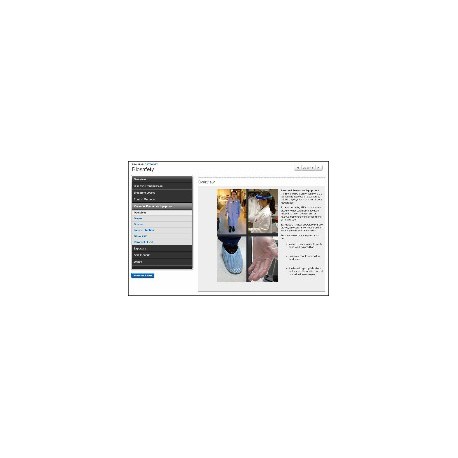No products
Prices are tax excluded
Laboratory Safety
WU-6
The Laboratory Safety includes the following modules. Biosafety Module, Chemical Safety Module, Electrical Safety Module, Ergonomic Safety Module, Fire Safety Module, Formaldehyde Safety Module, UV Safety Module.
Available in 12 to 24 hours
By buying this product you can collect up to 53 loyalty points. Your cart will total 53 points that can be converted into a voucher of $7.95.
Volume discounts
| Quantity | Discount | You Save |
|---|---|---|
| 2 | 3% | Up to $32.35 |
| 3 | 5% | Up to $80.87 |
Biosafety Module
Standard precautions, personal protective equipment and spill cleanup
COURSE OUTLINE:
Overview: Learning Objectives, Introduction, Health Risks, Standard Precautions.
Disease Transmission: Overview, Parenteral, Respiratory, Contact, Phlebotomy Biosafety.
Biosafety Levels: Overview.
Control Methods: Overview, Engineering Controls, Work Practic, Controls.
Personal Protective Equipment: Overview, Gloves, Gowns, Face Protection, Other PPE, Removal of PPE.
Exposure: Overview.
Spill Cleanup: Overview, Procedure, Disinfectants.
Waste: Disposal.
Final Exam: Exam 1.
LEARNING OBJECTIVE- List 3 modes of disease transmission and a way to reduce risk of laboratory transmission for each mode
- List the 3 control methods used to limit exposure in laboratories, and give 2 examples of each
- List 4 types of Personal Protective Equipment (PPE) commonly used in laboratories and when to use them
- State the steps to follow when cleaning up a spill of biohazardous material
- List 3 items that should be discarded as regulated medical waste
Chemical Safety ModuleProper handling, storage, and disposal of laboratory chemicals, and methods for
responding to chemical spills and exposure
COURSE OUTLINE:
Introduction: Learning Objectives, Overview.
Laboratory Standard: Overview, Right to Know Training, Monitoring, Particularly Hazardous Substances.
Exposure Hazards: Overview, Routes of Entry, Acute Effects, Chronic Effects, Exposure Definitions, Chemical Effects, Chemical Definitions.
Hazard Labeling: Overview, Chemical Labeling, Secondary Labeling, Hazard Identification System, Room Signs.
Material Safety Data Sheets: Overview, MSDS Contents.
General Handling: Overview, Work Practice Controls, Basic Chemical Handling, Basic Compressed Gas Handling, Working Alone, Personal Protective Equipment, Standard Operating Procedures, Chemical Inventory.
Transport and Storage: Transport, Storage.
Waste Management: Overview, Source Reduction, Packaging Storage for Disposal, Waste Disposal.
Spills: Overview, Spill Kits, Assessing Spills, Cleanup, Mercury.
Chemical Exposure: Exposure Routes, Eyewash, Emergency Shower, Medical Consultation.
Final Exam: Exam 1.
LEARNING OBJECTIVE- List the 4 routes of entry for hazardous chemicals
- Define acute and chronic health effects
- Describe the proper method for labeling hazardous chemicals
- Describe the purpose of a material safety data sheet and list the 7 required types of information
- State the main hazard classes for dry chemicals, liquid chemicals and compressed gases
- List 5 requirements for disposal of hazardous chemicals
- State the method for assessing and cleaning a hazardous chemical spill
- State the steps to follow after exposure to a chemical
Electrical Safety ModuleBasic electrical theory, and how to identify and avoid electrical problems in the lab
COURSE OUTLINE:
Overview: Learning Objectives. Introduction.
Electrical Theory: Overview, Circuit, Short Circuit, Grounding, Circuit Breakers, Electrical Shock, Static Electricity.
Equipment Safety: Overview, Damaged Equipment, Power Cords, Maintenance, Extension Cords, Wet Locations, Flammables.
Exposure: Course of Action.
Final Exam: Exam 1.
LEARNING OBJECTIVE- Describe the basic theory behind Voltage, Amperage, Short Curcuits and Grounding Systems
- List 3 things that are indications of electrical problems in an instrument
- Identify 2 serious outcomes associated with electrical shock
- Describe when and how to inspect portable electrical equipment
- List the steps to take if someone is experiencing electrical shock
Ergonomic Safety ModuleRisk factors and symptoms for repetitive stress injury in the clinical laboratory,
with explanation and demonstration of ergonomically correct practices
COURSE OUTLINE:
Overview: Learning Objectives, Introduction.
Repetitive Stress Injury: Overview, Symptoms, Risk Factors, Neutral Posture, Awkward Postures, Static Positions, Forceful Exertions, Repetitive Motion, Contact Stress, Lifting, Vibration or Repeated Impact, Environmental Conditions.
Avoiding RSI: Take Action, Activity at Home.
LEARNING OBJECTIVE- Identify eight risk factors for repetitive stress injury
- Identify symptoms of repetitive stress injury
- List eight methods of avoiding repetitive stress injury
Fire Safety ModuleThe selection and use of portable fire extinguishers, types of fires and fire hazards,
and the steps to take in the event of a fire
COURSE OUTLINE:
Introduction: Learning Objectives, Overview.
Fire Chemistry: Fire Triangle, Definitions, Classes of Fire.
Portable Fire Extinguishers: Overview, Dry Chemical Extinguishers, Water Fire Extinguishers, Other Types, Selection of Extinguishers.
Fire Prevention: Overview, Identify Hazards, Housekeeping, Fire Response Equipment, Flammable Chemicals.
Fire Response: Overview, Be Prepared, Response to Fire, Assessing and Fighting Fire, Operation of a Portable Fire Extinguisher.
LEARNING OBJECTIVE- List the 3 legs of the Fire Triangle
- List the 4 classes of fire and an example of each
- Identify 5 types of fire extinguishers and the class(es) of fire each can be used on
- Describe the proper use of a portable fire extinguisher
- List the 4 steps to follow if you discover a fire
Formaldehyde Safety ModuleProper handling, storage, and disposal of Formaldehyde, and methods
for responding to spills and exposure
COURSE OUTLINE:
Introduction: Learning Objectives, Overview, Properties, Forms of Formaldehyde.
Health Effects: Overview, Carcinogenic and Reproductive Effects, Toxic Effects, Irritant, Corrosive, Sensitizer.
Working with Formaldehyde: Exposure Limits, Regulated Areas, Exposure Monitoring, Medical Surveillance, Laboratory Exposure Risks, Exposure Control, Chemical Labeling, Storage, Waste, Spill Cleanup, First Aid.
LEARNING OBJECTIVE- List 4 hazards associated with formaldehyde
- List 4 symptoms associated with overexposure to formaldehyde fumes
- State the airborne exposure limits for formaldehyde
- Describe an appropriate label for formaldehyde-containing solutions
- List the required personal protective equipment necessary when working with concentrated formaldehyde
- Describe appropriate steps to take when cleaning a minor spill of formaldehyde
UV Safety ModuleThe hazards associated with UV light in the clinical laboratory and the proper use
of safety equipment to avoid exposure
COURSE OUTLINE:
Overview: Learning Objectives, Introduction.
Exposure Risk: Review of UV Light, Assessing Risk, Working With UV Light, Biosafety Cabinets.
Health Effects: Overview, Skin, Eye.
Exposure Control: Shields, Personal Protective Equipment.
Final Exam: Exam 1.
LEARNING OBJECTIVE- List two negative health effects of UV light exposure
- List four pieces of UV personal protective equipment and describe how to use them appropriately
- Describe how to distinguish UV protective shielding from shielding that does not protect against UV light
This product is now supplied as an online course. You have unlimited access to the course for 5 years.













































